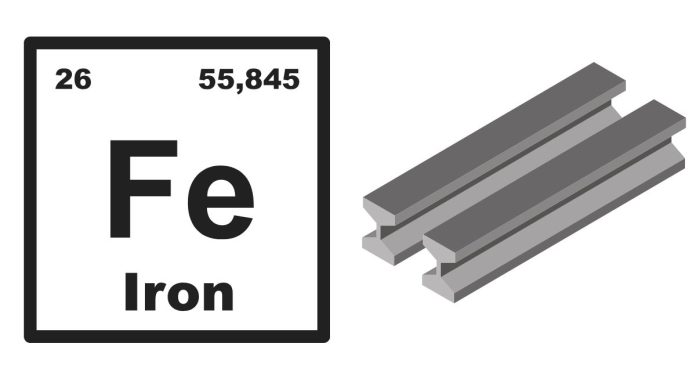Iron is one of the most abundant elements in the Earth’s crust, and it is found in nature in various forms, primarily as iron ores. These ores are compounds of iron with other elements, and the most common sources of natural iron are minerals that contain iron. Here’s where you can typically find iron naturally:
1. Iron Ore Deposits
The primary sources of iron are iron ores, which are minerals containing iron that can be mined for industrial use. The most common iron ores include:
- Hematite (Fe₂O₃): This is the most commonly mined iron ore. Hematite is found in sedimentary rocks, often in regions that were once covered by water. It has a reddish color due to its iron content and is the main source of iron for steel production.
- Magnetite (Fe₃O₄): Magnetite is another common iron ore. It is a black or brownish-black mineral with magnetic properties, which is why it’s named “magnetite.” It is typically found in igneous rocks and is an important source of iron.
- Limonite (FeO(OH)·nH₂O): Limonite is a hydrated iron oxide that occurs in soils and clays. It’s less rich in iron compared to hematite and magnetite but still a significant source of iron in certain regions.
- Siderite (FeCO₃): Siderite is an iron carbonate mineral found in sedimentary rocks, often in regions with a history of water presence. Though less common than hematite or magnetite, it’s still used for iron extraction.
2. Iron in Meteorites
Iron can also be found in meteorites, specifically iron meteorites, which are composed mainly of nickel-iron alloys. These meteorites are remnants from the early solar system and can contain nearly pure iron, often mixed with nickel. Meteorites have provided valuable insight into the early formation of our solar system.
3. In the Earth’s Core
While not directly accessible, iron is the dominant element in the Earth’s core. Scientists believe that about 35% to 40% of the Earth’s core is composed of iron, mixed with nickel and other elements. This iron is not naturally found on the Earth’s surface but is crucial to the planet’s magnetic field and overall structure.
4. Iron in Biological Systems
Iron is also found naturally in living organisms, particularly in animals and plants. In these forms, iron is bound to proteins and enzymes, where it plays an essential role in oxygen transport and energy production. The most notable examples are:
- Hemoglobin: The iron-containing protein in red blood cells that helps carry oxygen throughout the body.
- Myoglobin: A similar iron-containing protein found in muscles, responsible for oxygen storage.
- Ferritin: A protein in animals that stores iron, typically found in the liver, spleen, and bone marrow.
Plants absorb iron from the soil in the form of ferrous iron (Fe²⁺) and use it in various biochemical processes, particularly in photosynthesis.
5. Iron in the Earth’s Crust and Mantle
Iron is a major component of the Earth’s crust and mantle. It is not usually found in its pure form on the surface of the Earth, but rather as part of compounds like iron ores (hematite, magnetite, etc.). These ores are mined for iron extraction. However, iron is also present in smaller amounts in many rocks and minerals found in the Earth’s crust, contributing to their overall composition.
Conclusion
Iron is found naturally in a variety of places:
- In iron ores such as hematite, magnetite, limonite, and siderite, which are mined for industrial use.
- In meteorites, where it appears as nearly pure iron alloyed with nickel.
- In the Earth’s core, making up a significant portion of its composition.
- In biological systems, where it plays a crucial role in oxygen transport and energy production.
The widespread presence of iron, from deep inside the Earth to the rocks and even in living organisms, shows how essential this element is both in nature and in human industries.
Related posts:
- What does ringing in the ears mean spiritually?
- What Colors Do Blue and Green Make?
- How Long Does Raw Chicken Really Last in the Fridge?
- What are some amazing and memorable Valentine’s Day ideas that will leave a lasting impression?
- What is the definition of ‘friends with benefits?
- What is the difference between a bachelor’s and a degree?


